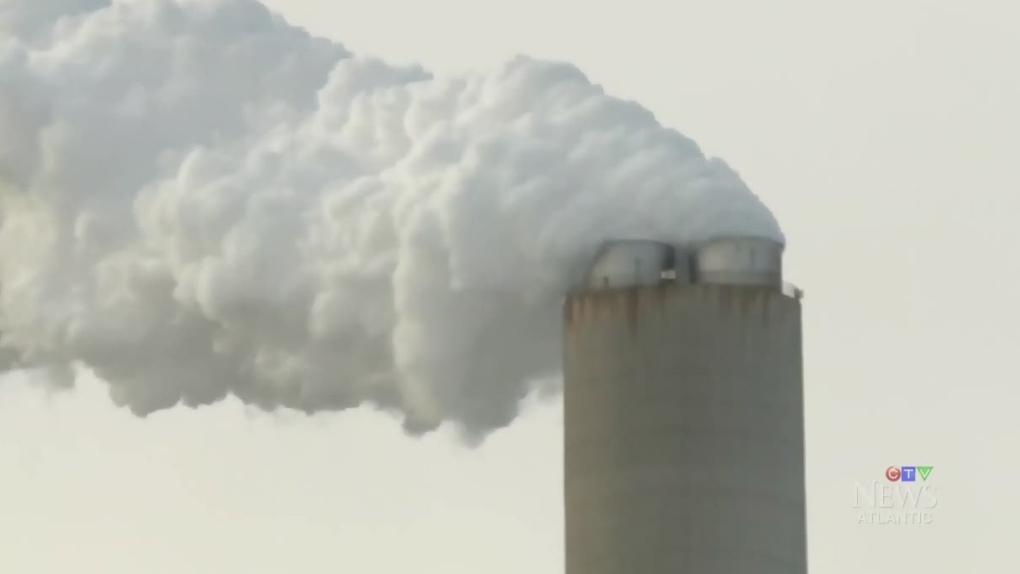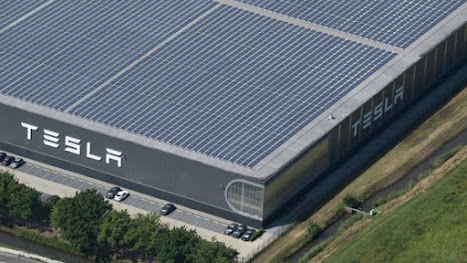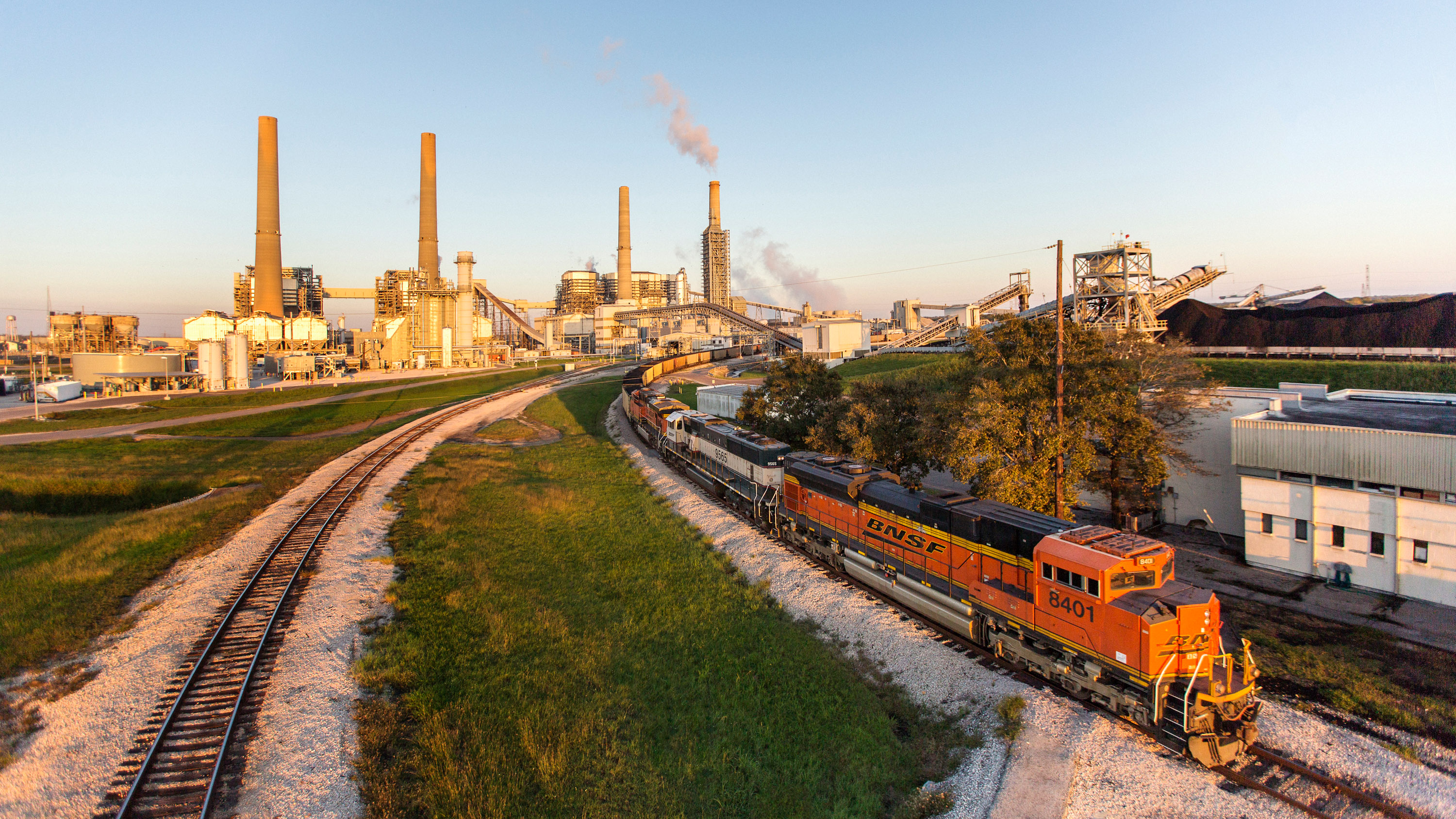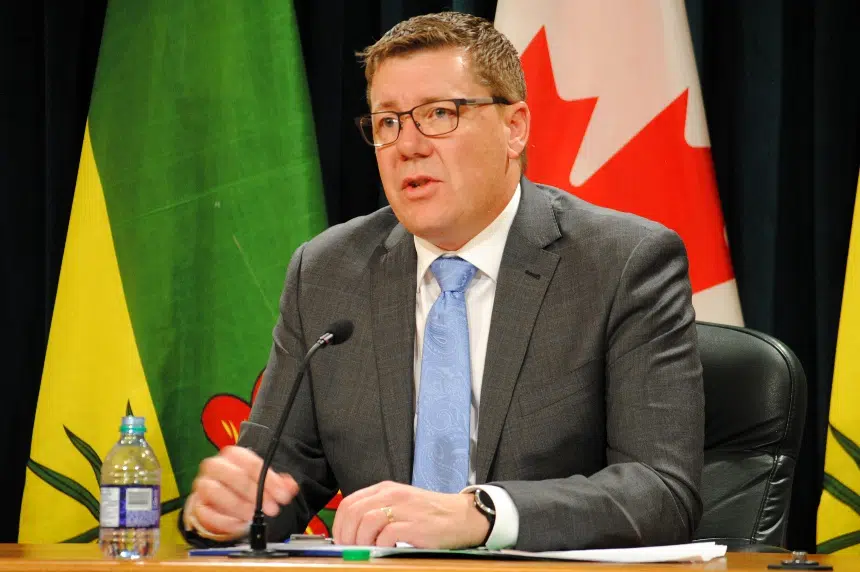"Fossil fuel subsidies are a roadblock to a more sustainable future," said the head of the International Energy Agency.
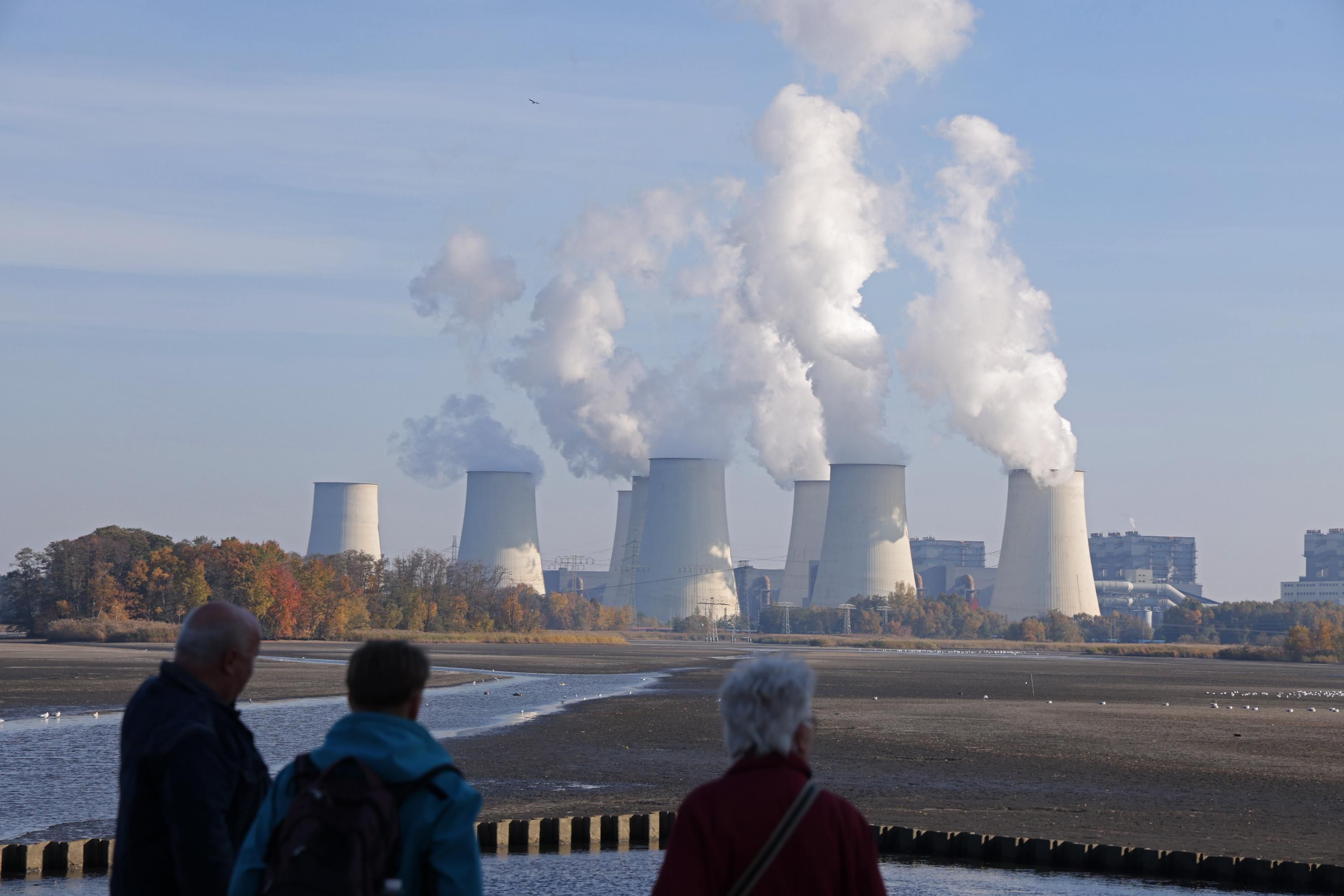
People look at a coal-fired power plant in Peitz, Germany on October 29, 2021.
JAKE JOHNSON
An analysis published this week found that government subsidies bolstering the production and consumption of coal, oil, and gas nearly doubled in 2021, even as climate scientists warned that fossil fuel development must be rapidly cut off if the international community is to have any hope of stopping runaway planetary warming.
Data compiled by the Organization for Economic Cooperation and Development (OECD) and the International Energy Agency (IEA) shows that 51 governments around the world—including the United States, Germany, Canada, China, Russia, and Saudi Arabia—provided a combined $697.2 billion in tax breaks and other handouts to the fossil fuel industry last year, up from $362.4 billion in 2020.
The International Monetary Fund has estimated that total global fossil fuel subsidies amounted to nearly $6 trillion in 2020.
"The insanity continues," climate scientist Bill McGuire tweeted in response to the new figures.
The OECD and IEA said that fossil fuel subsidies, which have continued despite nations' vows to start reining them in amid climbing carbon emissions and devastating extreme weather, are undercutting global efforts to fight the climate crisis.
"Fossil fuel subsidies are a roadblock to a more sustainable future," said IEA executive director Fatih Birol, who noted that the doubling of fossil fuel subsidies last year was at least in part attributable to government attempts to blunt the impact of soaring energy costs on consumers.
As The Guardian pointed out Wednesday, that approach "largely benefits wealthier households, as they use the most energy, rather than targeting those on low incomes."
Research has shown that the richest 10% of the global population consumes around 20 times as much energy as the poorest 10%.
Oil companies, meanwhile, are raking in huge profits as they exploit Russia's invasion of Ukraine to push massive costs onto consumers.
"Russia's war of aggression against Ukraine has caused sharp increases in energy prices and undermined energy security. Significant increases in fossil fuel subsidies encourage wasteful consumption though, while not necessarily reaching low-income households," OECD Secretary-General Mathias Cormann said in a statement. "We need to adopt measures which protect consumers from the extreme impacts of shifting market and geopolitical forces in a way that helps keep us on track to carbon neutrality as well as energy security and affordability."
The fresh subsidy data was released days ahead of a U.S. National Oceanic and Atmospheric Administration (NOAA) report showing that "global sea levels and ocean heat content reached record highs in 2021," an indicator that the climate crisis is accelerating as governments prop up the oil and gas industry.
"The data presented in this report are clear—we continue to see more compelling scientific evidence that climate change has global impacts and shows no sign of slowing," NOAA Administrator Rick Spinrad said in a statement Wednesday.
"With many communities hit with 1,000-year floods, exceptional drought, and historic heat this year," Spinrad added, "it shows that the climate crisis is not a future threat but something we must address today as we work to build a climate-ready nation—and world—that is resilient to climate-driven extremes."
Rachel Williamson

Global fossil fuel subsidies almost doubled over the course of 2021, a new report has shown, as governments around the world – and not least of all in Australia – boosted their levels of support for coal, oil and gas projects in the name of fending off cost of living crises.
OECD and IEA data shows that 51 countries worldwide spent a combined $US697.2 billion on subsidies for fossil fuels in 2021, up from $US362.4 billion in 2020.
These subsidies are expected to rise further in 2022, alongside fossil fuel prices, as the global energy crisis continues, and the soaring cost of fossil fuel energy takes its toll on consumers.

In Australia, state and federal governments in Australia have spent billions on subsidies for both companies and consumers in 2021 and in 2022, to assuage the impact of skyrocketing fuel and electricity prices and to support the former Coalition government’s “gas-led recovery.”
The latest OECD fossil fuel subsidy data for Australia is for 2020 and show the government spent $10.6 billion on tax breaks and handouts.
But in 2021 and 2022 that figure could almost double as federal funding and compensation for power plant operators following the Australian Energy Market Operator’s (AEMO) intervention in the National Energy Market (NEM) in June alone totals some $7.1 billion.
Since 2020, the former Coalition government splashed at least $5.6 billion in extra federal funding for fossil fuel projects and tax breaks for consumers.
Those subsidies included $58.6 million for new gas storage and import infrastructure, $600 million for Snowy Hydro’s new gas fired power plant at Kurri Kurri – a project whose costs have now blown out past $1 billion – and almost $2 billion to oil refiners to prop up profit margins.
In 2022 before the federal election in May, the Morrison government squeezed in another $50.3 million to support gas infrastructure in the Bowen, Surat and Beetaloo basins and $3 billion worth of support to internal combustion engine (ICE) drivers by cutting the fuel excise tax by 22.1c for six months in March.
State governments added more subsidies via electricity rebates to assist with cost of living pressures. These include Western Australia’s $400 Household Electricity Credit, Victoria’s $250 Power Saving Bonus, and Queensland’s $175 Cost of Living Rebate.
And taxpayers will bear the brunt of $1.5 billion in compensation to power plant operators following AEMO’s shutdown of the NEM in June, when it directed plants to reopen and imposed a wholesale price cap after some shut down operations on the back of soaring coal and gas prices.
These costs are direct tax breaks and extra funding Australian governments have committed to, but ignore the implicit costs of undercharging for environmental costs, such as through climate change, and foregone taxes such as would come from supporting a thriving electric vehicle industry.
The IMF counts these impacts in its fossil fuel subsidy data, which it says topped $5.9 trillion in 2020 and will continue to climb as emerging markets gain more of a share of fuel consumption.
Future costs
The OECD says consumption subsidies, like Australia’s fuel excise tax cut, are likely to continue around the world in 2022 as countries grapple with the risks of ongoing high cost of living for their citizens.
“Russia’s war of aggression against Ukraine has caused sharp increases in energy prices and undermined energy security. Significant increases in fossil fuel subsidies encourage wasteful consumption though, while not necessarily reaching low-income households,” OECD Secretary-General Mathias Cormann said in a statement.
“We need to adopt measures which protect consumers from the extreme impacts of shifting market and geopolitical forces in a way that helps keep us on track to carbon neutrality as well as energy security and affordability.”
While the new Labor government has committed to not extend the fuel excise reduction when it finishes in October, future subsidies include oil and gas field decommissioning costs.
Australian taxpayers will bear the $325 million cost of the first stage clean up of the abandoned Northern Endeavour oil vessel, although oil and gas producers will need to cover some of the estimated $30.44 billion in future decommissioning costs after a new levy of 48c per barrel of oil was imposed in April.
Rachel Williamson is a science and business journalist, who focuses on climate change-related health and environmental issues.
